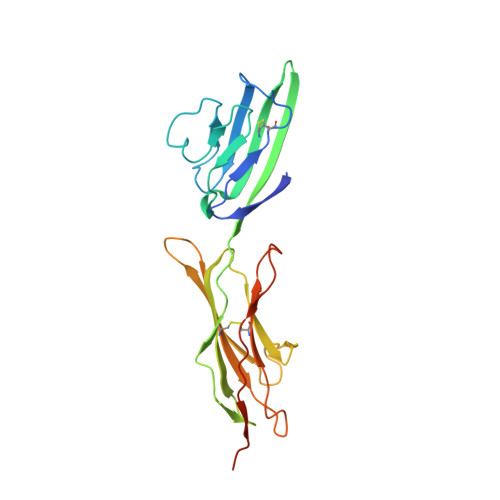The specificity of DNA recognition by the RAGE receptor.
Yatime, L., Andersen, G.R.(2014) J Exp Medicine 211: 749-750
- PubMed: 24778420
- DOI: https://doi.org/10.1084/jem.20132526
- Primary Citation of Related Structures:
4OF5, 4OFV - PubMed Abstract:
A recent paper by Sirois et al. in The Journal of Experimental Medicine reports that the receptor for advanced glycation end-products (RAGE) promotes uptake of DNA into endosomes and lowers the immune recognition threshold for the activation of Toll-like receptor 9. Two crystal structures suggested that the DNA phosphate-deoxyribose backbone is recognized by RAGE through well-defined interactions. However, the electron densities for the DNA molecules are weak enough that the presented modeling of DNA is questionable, and models only containing RAGE account for the observed diffraction data just as well as the RAGE-DNA complexes presented by the authors.
- Department of Molecular Biology and Genetics, Aarhus University, Gustav Wieds Vej 10C, DK-8000 Aarhus, Denmark.
Organizational Affiliation:
















